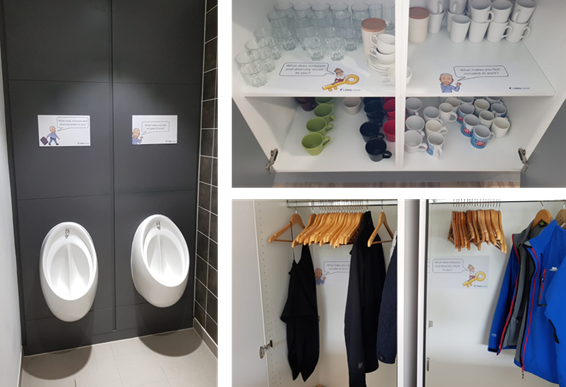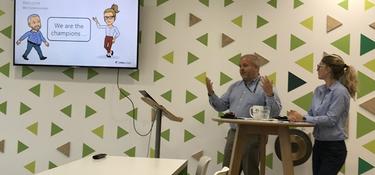Food for thought: why it’s important to consider everyone’s appetite when it comes to inclusion and diversity
We’re passionate about our people at Prologis UK and, as part of our commitment to inclusion and diversity, we recently appointed two Diversity Champions to promote the importance of diversity and equality across our business.
Stuart Davies and Melissa Brand will help us champion and celebrate a diverse, inclusive and gender-balanced culture within our business and recently, they hosted ‘the creative croissant’ – a breakfast event where employees had the opportunity to explain what inclusion and diversity means to them.
“It’s important that our inclusion and diversity policy doesn’t sit on a shelf gathering dust,” Mel explains. “It’s also important that the team feel part of our I&D journey and have the opportunity to shape the future of our company.
We are committed to continuing the conversations around I&D and really listening to what people have to say
Mel Brand, Prologis UK
So why the creative croissant?
“The ‘creative croissant’ was an attempt to bring everyone together, over breakfast, and understand what we can do to create a more inclusive and diverse workplace,” Stuart explains. “No matter how big your office is, the people within it will come from different backgrounds and cultures and many of them will have different tastes and preferences when it comes to the type of foods they like to eat and the way they wanted to be included in the workplace.”
Of course, the commitment to diversity and inclusivity must come from the very top of the organisation and it was fitting that Andy Griffiths, our Regional Head, spoke openly and honestly about what I&D means to him as the father of two daughters and the role that men can play in supporting and nurturing the next generation.
You can read more about Andy’s thoughts on I&D here.
During the event, employees were reminded of the Prologis Inclusion and Diversity programme and had the opportunity to watch the company’s new I&D video, which was well received. Employees were then asked to consider three questions:
- What does I&D mean to you?
- What makes you feel included at work?
- What can you do to make sure others are included?

These questions promoted some interesting debate with people commenting that I&D should value everyone’s contribution and opinion, regardless of their position within the company. Others commented on the need to feel valued and able to be their ‘authentic self’ at work. It was also noted that people feel more included and valued when others make the effort to involve them, especially when people are new to the organisation or where English is perhaps not their first language. It was also suggested that, sometimes, it is not your gender, culture or sexual persuasion that holds you back in the workplace, but the amount of power you hold within an organisation and how seriously your opinions are considered. Empowering people to contribute their ideas, whatever their level, was seen as crucial to building a thriving business where all are listened to and appreciated.
At the end of the event, people were asked to pair-up with a ‘buddy’ and discuss one thing they could do to make people feel more included. These ‘commitments to change’ were then written down and placed in an envelope (in the hope that if was written it down it might actually happen). These envelopes will then be given back to the team at a later date to see if they have actually done what they committed to do and to share their experience with either the whole team or with their buddy.
“Diversity and inclusivity initiatives will only be successful if everyone experiences a feeling of belonging in the workplace,” Mel concludes. “We are committed to continuing the conversations around I&D and really listening to what people have to say.”
Mel and Stuarts ‘top-tips’ for hosting an inclusion and diversity event
- Ask, don’t tell: rather than forcing people to attend the event we sought their views and asked them to help us make our workplace more diverse and inclusive. Rather than telling them what to do we asked them a series of questions so they felt included and part of the I&D journey;
- Bring I&D to life: we created fun posters displaying our three questions and placed them everywhere in the office…. they were in the cupboards, by the printers and even in the toilets! Don’t forget to translate the posters into different languages if you have multi-lingual teams – even if everyone speaks English, making the effort to acknowledge different backgrounds builds trust and acceptance.
- Be Creative: I&D builds more creative teams and the ‘creative croissant’ was our way to bring people together over food. Why not ask people to suggest foods for your event that mean something to them or represent their culture or beliefs? It’s a great way of opening-up conversations and making people feel included.
- Less talk, more action: don’t create an I&D policy then file it away. Bring it to life by creating Diversity Champions and empowering them to create events, challenge current policy and bring about change.
- Keep a record: keep a note of people’s suggestions and ideas and think of ways you can move the conversations forward and really drive change within the organisation.

